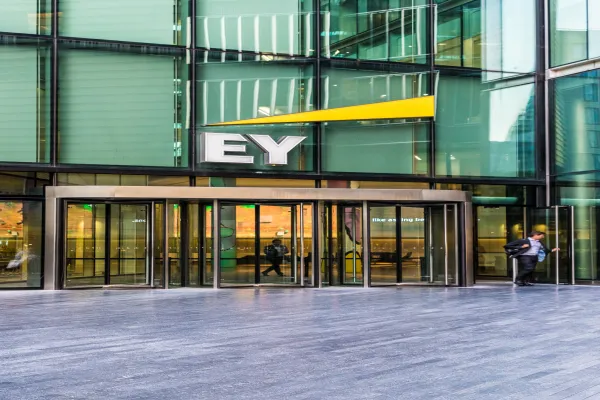Two years ago Daniel LeVan, lead manager of the $516 million Boston Co. International Small Cap Fund, was looking to sell shares of a German business that made hardware for replicating CDs and DVDs. The stock had risen only slightly since he had bought it six months earlier, and he wanted to replace it with another technology name.
He considered several candidates, but one caught his eye: Tandberg Television, a Norwegian company at the forefront of digital television technology. Tandberg manufactures an encoder that makes it possible to broadcast high-definition television.
The company had produced three quarters of above-expected earnings, it had a strong order book, and its primary competitor was not yet making a profit. LeVan's team added Tandberg to its portfolio in November 2003; since then the stock price has nearly tripled.
Tandberg's run-up is part of a sweeping rally in international small-cap equities. The stocks have soared 130 percent since the MSCI Europe, Australasian and Far East small-cap index bottomed on September 21, 2001.
"Four or five years ago, we couldn't get anyone interested in international small caps," says Ben Inker, director of asset allocation at Boston-based Grantham, Mayo, Van Otterloo & Co. Lately, Inker says, "we've seen a sea change in investors' attitude toward the asset class. It's not simply that the sector has beaten the pants off the market: People are increasingly building in a permanent allocation to international small caps in their strategic asset allocation policy."
Over the 12 months ended October 31, international small-cap stocks returned 28.8 percent; over three years they returned an average annual 34.7 percent, as measured by the MSCI EAFE small-cap index, which includes stocks with free floatadjusted market capitalizations of between $200 million and $1.5 billion in 21 developed countries, excluding the U.S. and Canada.
In comparison, U.S. small caps, as measured by the Standard & Poor's small-cap 600 index, returned 15.3 percent for the 12 months ended October 31 and an annualized 21.6 percent over three years. International large caps, as measured by the MSCI EAFE large-cap index, returned 18.6 percent and 21.7 percent over the same one- and three-year periods.
Investing in international small caps comes with its own risks, of course, including less access to debt and greater vulnerability to jolts that weaken local economies. And given the rally in the sector, some investors are growing cautious.
Over the past two years, GMO has cut the allocation of international small caps in its absolute-return portfolio to 4 percent from roughly 25 percent. "These stocks are not cheap," Inker says. But he and other investors agree that they offer advantages for long-term portfolios.
"They have had slightly lower volatility than international large caps, and they have had a lower correlation with the S&P, which means they've had a quite noticeably lower beta to the S&P than international large caps," says Inker. "It is one of those asset classes that people should want exposure to on a strategic basis. Maybe 20 percent to 30 percent of their international exposure should be small caps."
Prashant Bhayani, head of European and international small-cap equity at Goldman Sachs Asset Management, believes there are greater exploitable inefficiencies in the small-cap market than in the large-cap space. For every three analysts who cover small caps in Europe, he says, 16 cover large caps; in Asia the ratio is 4-to-10.
"It's one of the few asset classes in the world that's becoming more inefficient," says Bhayani, who oversees Goldman's international small-cap equity strategy. "If a company is not valued properly by the market and the coverage is not as good, you have much more ability to add alpha to your portfolio."
The Boston Company International Small Cap Fund has surpassed 88 percent of its peers with three-year annualized returns of 31.5 percent; its one-year return of 39.6 percent puts it in the top 1 percent of the funds in its sector, according to Morningstar Research.
Lead manager LeVan and his colleagues use quantitative models and information gleaned from meetings with senior managements to score a universe of 2,000 international small caps, looking for companies they believe are poised to gain from such factors as changing demographics, increased regional trade and market leadership in technology.
Besides Tandberg Television, other strong performers LeVan has favored include Hyundai Mipo Dockyard Co., a South Korean shipbuilder whose second-quarter earnings more than doubled on rising orders; and Elekta, a Swedish medical technology company.
Hyundai Mipo Dockyard has benefited from increased trade with China; growing demand for neurology and oncology treatments has helped fuel Elekta's growth. Shares of Hyundai Mipo Dockyard have quadrupled in price since LeVan acquired them in December 2003, and Elekta's have more than tripled since he bought them in January 2002. LeVan says he has trimmed but not liquidated his positions because he believes the stocks are still positioned to outperform the market.
LeVan occasionally stumbles. In March he bought shares of Just Group, a Richmond, Australiabased clothing retailer, but he sold them six months later, when the company reduced its earnings outlook and the stock plunged 35 percent.
His fund invests in about 200 stocks, balanced between Europe and Asia. The portfolio is modestly overweight in energy and technology, but LeVan says that is a by-product of selecting individual companies; he doesn't take top-down views of industry sectors or geographic regions.
Other funds, such as the $747 million Laudus Rosenberg International Small Cap and the $1.14 billion GMO International Small Companies III, cast a wider net. The Laudus fund owns between 800 and 900 names selected by computerized models designed to find misvalued stocks trading at a 10 to 20 percent discount to their estimated fair value. The GMO fund owns shares in about 500 companies.
"We manage this portfolio in a largely quantitative way," says GMO fund manager Tom Hancock. "We buy lots of positions in stocks we think are cheap, but we are willing to pay more for a company with high, stable profitability and low debt. I think our investment philosophy is 'quality at a reasonable price.'"
The strategy has delivered an average annual three-year return of 32 percent and a one-year return of 33.5 percent, beating 94 percent and 81 percent of the fund's peers, respectively. In 2003, Hancock began buying stock in U.K. homebuilders Barratt Developments and George Wimpey. Both had trailing price-earnings ratios of between 5 and 6 when he purchased them. Since then Barratt is up about 50 percent; George Wimpey, more than 30 percent. Their multiples, as of October 31, were 6.3 and 5.7, respectively.
Hancock also shifted some of the fund's holdings into more defensive stocks, such as German pharmaceuticals company Merck. Since Hancock began acquiring Merck shares in the second half of 2003, the stock has more than doubled, to about E70 ($82) a share.
"We think the valuation discount of risky assets has pretty much evaporated," says Hancock. "In a sense we are saying safer, more defensive stocks are insurance now -- you can get them for a good price, and if markets turn sour or there is any unexpected downturn in the economy, they will do relatively well."
On the other hand, Jeffrey Urbina is going after growth. As part of a team that manages a $12 billion international equity portfolio for William Blair & Co., Urbina targets stocks that offer top- and bottom-line growth rates of 15 percent.
"We're not looking for cheap companies," says Urbina, whose firm launched a dedicated international small-cap fund in November. "We look for companies with superior management and with sustainable and consistent growth in volumes, margins, earnings -- classic growth investments."
The strategy led Urbina to K.K. Davinci Advisors, a Japanese real estate advisory firm. Since Urbina began buying the stock more than a year ago, it has soared from about ¥106,000 ($890) a share to more than ¥530,000. The gains reflect rising property valuations that have helped K.K. Davinci reap capital gains and higher earnings while increasing its assets under management.
"Japan is 20 to 30 years behind Europe and the U.S. in building shopping malls," says Urbina. "Land was so expensive that no one could afford to build there. Now you are able to put together big blocks of land."
Urbina has increased his weighting in Japan to 25 percent from 20 percent and slightly increased his weighting in continental Europe to 38 percent from 32 percent. But in the U.K., where he believes rising interest rates and a heavy exposure to adjustable-rate mortgages have weakened consumer spending, he has shaved the weighting from 15 to 10 percent.
"This is an interesting asset class," concludes GMO's Inker. "International small caps are not strongly tied to the U.S. economy, and they've got a relatively low correlation to U.S. stocks.
"But," he adds, "they've had a hell of a run."





